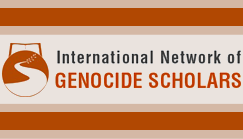Event Title
The "care" in the restitution of bodies of detainees-disappeared from the Pinochet dictatorship.
Submission Type
Paper
Abstract
The last military dictatorship in Chile (1973-1990) left around 35,000 direct victims of human rights violations, including more than 3,000 deaths, and 1,000 missing persons. These last were clandestinely detained, tortured and murdered. Their bodies were then "disappeared" through different practices. The Human Rights Unit of the Legal Medical Service (SML) under the Ministry of the Interior of Chile (2006-present) is currently managing the exhumation, identification and restitution of the detained-disappeared bodies. This work is highly valued by most of the society. However, this was not always the case. The previous management of the SML (undertake from 1991 to 2005), were questioned and discredited due in particular to the erroneous identifications of the bodies that had been clandestinely buried in courtyard 29 of the Santiago General Cemetery during the dictatorship. As a consequence of these badly made identifications, the relatives had to "return" the extraneous bodies, which had already been buried by the families. In this presentation, we are going to see the way in which, after the "inadequate" treatments that the bodies received in both dictatorship and democracy, the Human Rights Unit strive so that both the identified detainees-disappeared and their relatives receive special attention through different practices aiming at “caring” both for the bereaved and the dead. In this framework, the delivery of a body by the SML in 2019 will thus be described and analyzed. This restitution will be understood as one more mortuary practice within the "passage rituals", such as the wake and burial, which subsequently took place after the recovery of the body. In this way, the different professionals involved in the identification task will be understood as significant actors in the family's bereavement and mourning processes.
Biographies
The "care" in the restitution of bodies of detainees-disappeared from the Pinochet dictatorship.
The last military dictatorship in Chile (1973-1990) left around 35,000 direct victims of human rights violations, including more than 3,000 deaths, and 1,000 missing persons. These last were clandestinely detained, tortured and murdered. Their bodies were then "disappeared" through different practices. The Human Rights Unit of the Legal Medical Service (SML) under the Ministry of the Interior of Chile (2006-present) is currently managing the exhumation, identification and restitution of the detained-disappeared bodies. This work is highly valued by most of the society. However, this was not always the case. The previous management of the SML (undertake from 1991 to 2005), were questioned and discredited due in particular to the erroneous identifications of the bodies that had been clandestinely buried in courtyard 29 of the Santiago General Cemetery during the dictatorship. As a consequence of these badly made identifications, the relatives had to "return" the extraneous bodies, which had already been buried by the families. In this presentation, we are going to see the way in which, after the "inadequate" treatments that the bodies received in both dictatorship and democracy, the Human Rights Unit strive so that both the identified detainees-disappeared and their relatives receive special attention through different practices aiming at “caring” both for the bereaved and the dead. In this framework, the delivery of a body by the SML in 2019 will thus be described and analyzed. This restitution will be understood as one more mortuary practice within the "passage rituals", such as the wake and burial, which subsequently took place after the recovery of the body. In this way, the different professionals involved in the identification task will be understood as significant actors in the family's bereavement and mourning processes.





Comments
View the agenda item.